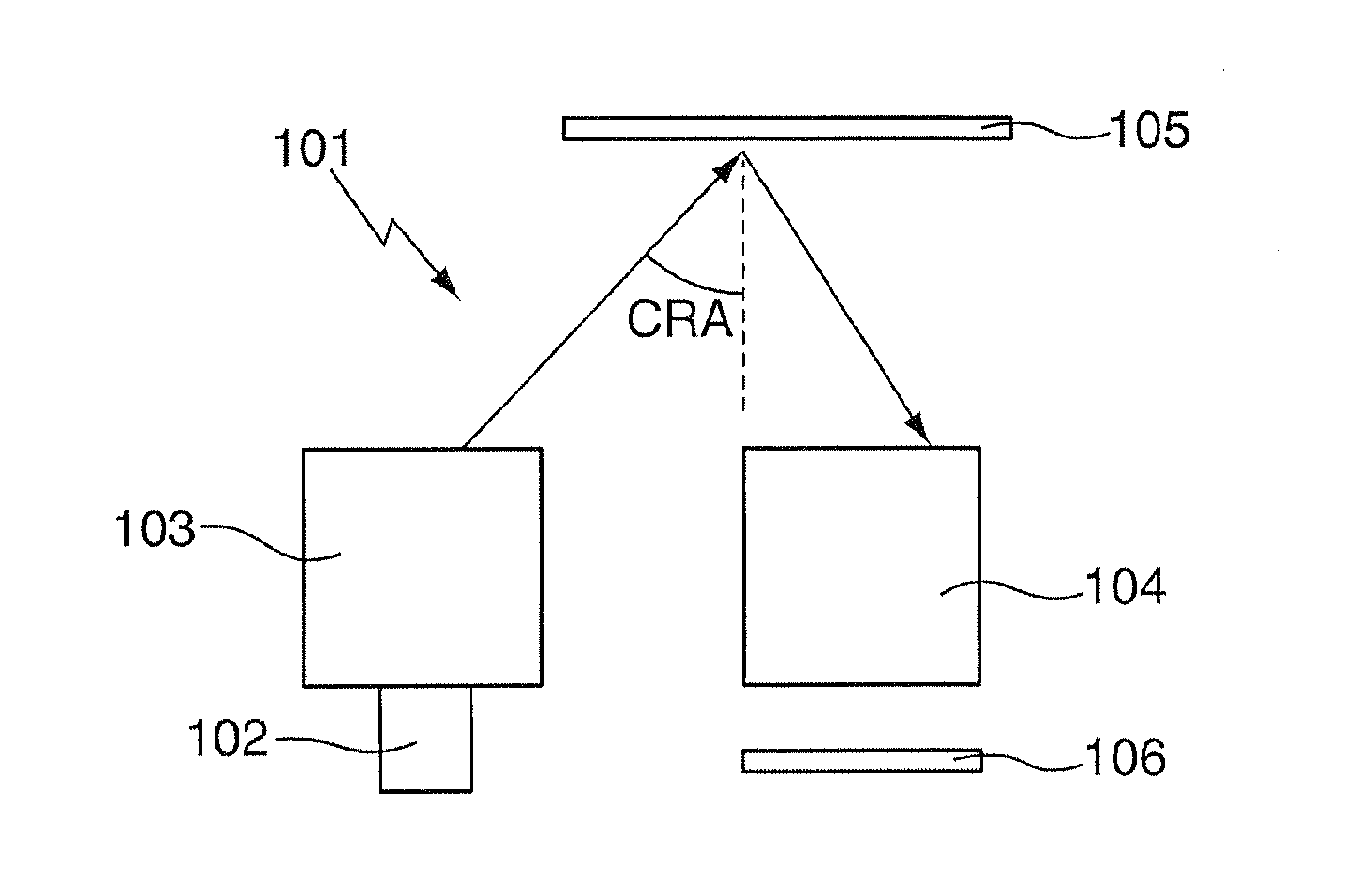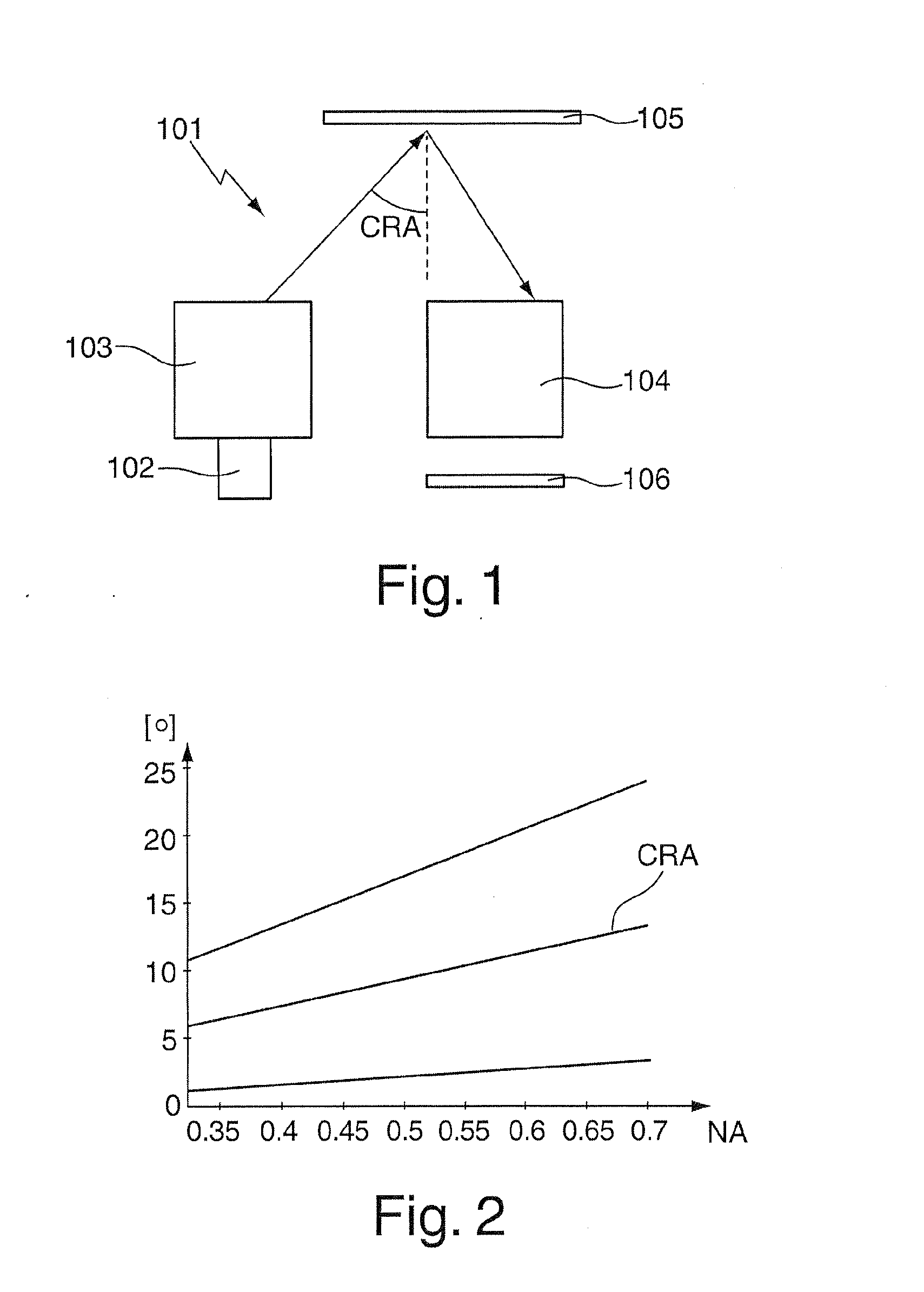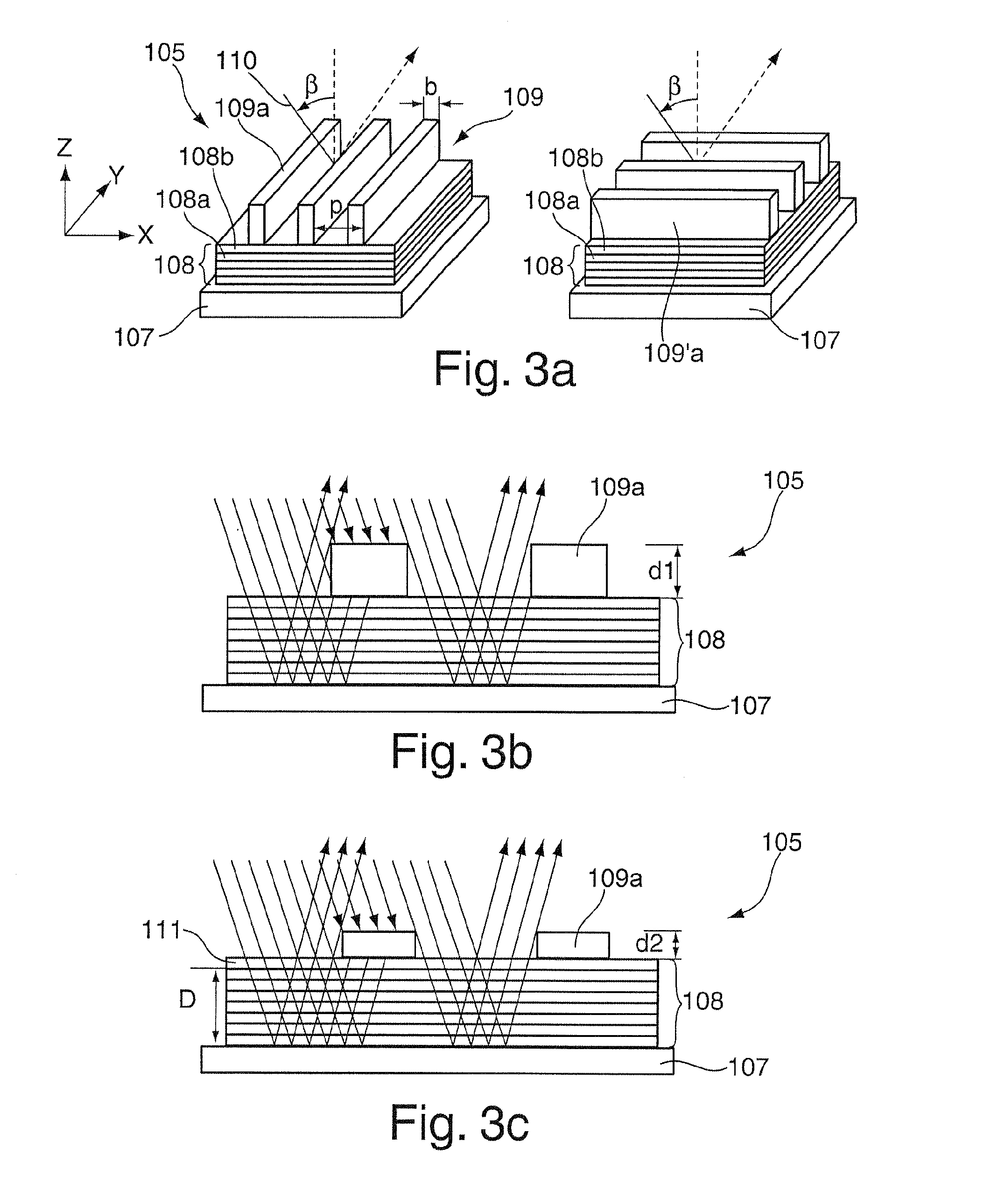Mask for EUV lithography, EUV lithography system and method for optimising the imaging of a mask
a mask and lithography technology, applied in the field of masks for euv lithography, euv lithography system and optimising the imaging of masks, can solve the problems of inability to have telecentric illumination of the mask in non-, inability to optimise two contributions to the telecentricity error separately, and inability to achieve telecentric illumination in non-, so as to improve image contrast and/or apodising during imaging, optimise the optical design of the mask
- Summary
- Abstract
- Description
- Claims
- Application Information
AI Technical Summary
Benefits of technology
Problems solved by technology
Method used
Image
Examples
Embodiment Construction
[0068]FIG. 1 illustrates an EUV lithography system 101 which has a beam shaping system 102, an illumination system 103 and a projection system 104 which are each accommodated in separate vacuum housings and which are arranged successively in a beam path which begins from an EUV light source (not illustrated) of the beam shaping system 102. For example, a plasma source or a synchrotron can be used as the EUV light source. The radiation being discharged from the EUV light source in the wavelength range between approximately 5 nm and approximately 20 nm is first bundled in a collimator (not illustrated); the desired operating wavelength, which is 13.5 nm in the present embodiment, is filtered out by the angle of incidence being varied by a downstream monochromator (not illustrated).
[0069]The radiation which is processed in the beam shaping system 102 with regard to wavelength and spatial distribution is introduced into the illumination system 103 which has optical elements (not illustr...
PUM
| Property | Measurement | Unit |
|---|---|---|
| thickness | aaaaa | aaaaa |
| flank angle | aaaaa | aaaaa |
| flank angle | aaaaa | aaaaa |
Abstract
Description
Claims
Application Information
 Login to View More
Login to View More - R&D
- Intellectual Property
- Life Sciences
- Materials
- Tech Scout
- Unparalleled Data Quality
- Higher Quality Content
- 60% Fewer Hallucinations
Browse by: Latest US Patents, China's latest patents, Technical Efficacy Thesaurus, Application Domain, Technology Topic, Popular Technical Reports.
© 2025 PatSnap. All rights reserved.Legal|Privacy policy|Modern Slavery Act Transparency Statement|Sitemap|About US| Contact US: help@patsnap.com



